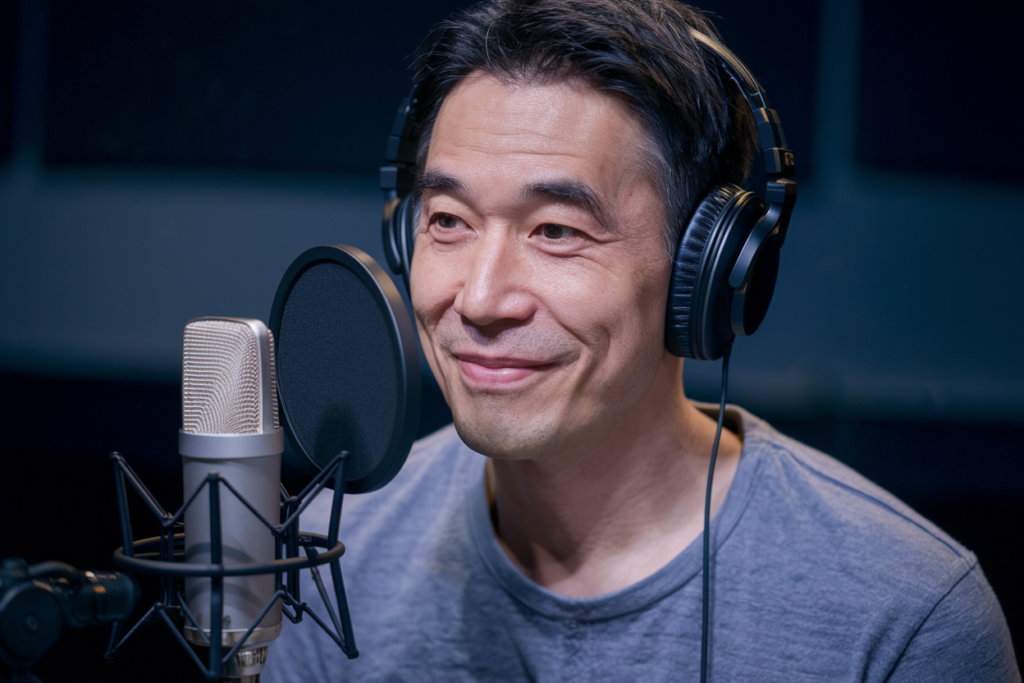Key Takeaways
- Japanese culture has significantly influenced global media, particularly through anime, video games, and fashion, creating connections among diverse audiences.
- Anime is known for its unique storytelling and artistic styles, captivating viewers worldwide with narratives that explore deep emotional themes.
- Iconic Japanese video game franchises like Final Fantasy and Super Mario have set benchmarks in gameplay design while facilitating cultural exchange among players globally.
- The voiceover industry plays a crucial role in adapting Japanese media for international markets, ensuring authentic performances resonate across different cultures.
- Historical developments post-World War II contributed to the rise of Japanese media’s global appeal, showcasing innovative storytelling techniques and artistic expression.
- Challenges such as cultural misinterpretations and the tension between globalization and cultural preservation must be addressed to maintain authenticity in Japan’s creative output.
Ever wondered how Japanese culture has shaped global media? From anime to video games and fashion, Japan’s creative output is making waves far beyond its shores. The unique storytelling and artistic styles have captivated audiences around the world, sparking trends that redefine entertainment.
Overview of Japanese Influence in Global Media
Japanese culture significantly shapes global media, particularly through anime, video games, and fashion. These forms of entertainment not only entertain but also create connections among diverse audiences.
Anime stands out for its unique storytelling techniques and artistic styles. With narratives ranging from fantastical adventures to deep emotional journeys, anime captivates viewers worldwide. Many popular titles achieve international recognition, influencing local creators and inspiring new genres.
Video games also showcase Japan’s innovative spirit. Iconic franchises like Final Fantasy and Super Mario set benchmarks in gameplay design and character development. The integration of rich storylines with engaging mechanics attracts players globally, fostering a community that celebrates these creations.
Fashion trends originating from Japan have made their way into mainstream culture as well. Streetwear styles emerging from Tokyo influence designers worldwide, incorporating elements such as bold graphics and unique silhouettes. This cross-cultural exchange enriches the fashion industry by blending traditional motifs with contemporary aesthetics.
The voiceover industry plays a crucial role in bringing Japanese media to international markets. Skilled voice actors deliver authentic performances that resonate deeply with audiences across languages and cultures. Their work ensures that characters maintain their integrity while adapting to different cultural contexts.
Japanese influence on global media continues to grow, reflecting an appreciation for innovation and creativity that resonates universally. Embracing this cultural exchange fosters collaboration among artists worldwide, enriching the global entertainment landscape further.
Historical Context
Japanese media has a rich history that significantly shaped its global influence. The journey began with traditional storytelling forms and evolved into modern entertainment phenomena, captivating audiences worldwide.
Early Beginnings of Japanese Media
Early Japanese media featured traditional narratives like kabuki and bunraku, showcasing theatrical performances steeped in cultural significance. These art forms laid the groundwork for Japan’s distinctive storytelling approach. As you look deeper, you’ll see how these early influences paved the way for contemporary animation and film, blending visual artistry with compelling narratives.
Expansion Post-World War II
Post-World War II marked a turning point for Japanese media. The introduction of television in the 1950s opened new avenues for content creation, allowing stories to reach broader audiences. Iconic shows emerged during this time, resonating with viewers both domestically and internationally. Anime started gaining traction in the 1960s, leading to significant global interest by the 1980s and 1990s as series like „Dragon Ball“ broke boundaries.
Japanese films also gained recognition at international festivals, drawing attention to unique stylistic choices that set them apart from Western cinema. Innovative directors crafted visually stunning narratives that captivated critics and audiences alike.
The rise of voiceover talent played an essential role in this expansion. Skilled voice actors brought characters to life through emotional depth and authenticity, enhancing viewer engagement across cultures. Their performances allowed international adaptations to resonate more deeply with local audiences while preserving original artistic intent.
This historical context illustrates how Japan’s media evolution intertwines artistry with audience connection—a legacy that continues influencing global trends today.
Key Elements of Japanese Media
Japanese media encompasses various elements that resonate globally, driving trends and fostering cultural exchange. Two major aspects stand out: anime and video games.
Anime and Its Global Appeal
Anime captivates audiences worldwide with its distinctive storytelling techniques and vibrant visuals. Unique narratives often blend fantasy with profound themes, allowing viewers to connect deeply with characters. Series like „Naruto“ and „Attack on Titan“ not only entertain but also explore complex human emotions, making them relatable across cultures. The success of anime has led to a growing appreciation for voice actors who bring these characters to life. Skilled voice talents create memorable performances that enhance the emotional depth of the stories, contributing significantly to anime’s global appeal.
Video Games and Cultural Exchange
Video games represent another critical element of Japanese media, facilitating cultural exchange among players worldwide. Iconic franchises such as „Final Fantasy“ and „The Legend of Zelda“ showcase Japan’s innovative spirit through engaging gameplay combined with rich storylines. These games often introduce players to unique aspects of Japanese culture, prompting interest in everything from traditional art forms to contemporary societal themes. Voice actors play a pivotal role here too; they lend their skills to create immersive experiences that resonate with diverse audiences by capturing the essence of characters in different languages while maintaining authenticity.
By intertwining these key elements—anime’s emotional storytelling and video games‘ engaging interactions—Japanese media continues shaping global entertainment landscapes, enriching cross-cultural connections along the way.
Case Studies of Japanese Media Success
Japanese media has made a significant impact globally, with various case studies showcasing its success in capturing international audiences.
Studio Ghibli and International Recognition
Studio Ghibli stands out as a hallmark of Japanese animation, known for its breathtaking artistry and compelling storytelling. Films like „Spirited Away“ achieved critical acclaim, winning an Academy Award for Best Animated Feature in 2003. This recognition not only solidified Studio Ghibli’s place in global cinema but also introduced Western audiences to the depth of Japanese culture through themes of nature, family, and personal growth. The studio’s unique approach resonates with viewers across age groups, making it a lasting influence on animated films worldwide.
Popularity of J-Pop and Japanese Fashion
J-Pop has transformed into a vibrant cultural phenomenon that extends beyond Japan’s borders. Artists like Hikaru Utada and Kyary Pamyu Pamyu have garnered international followings by blending catchy melodies with visually stunning performances. These artists often incorporate traditional elements into modern music styles, creating a unique sound that appeals to diverse audiences.
Similarly, Japanese fashion trends have taken the world by storm. Tokyo streetwear influences designers globally by fusing traditional aesthetics with contemporary styles. Brands showcase bold designs that challenge norms while reflecting Japan’s rich cultural heritage. The rise of Harajuku fashion exemplifies this blend; it’s not just clothing—it’s an expression of identity that resonates deeply with young people around the globe.
The interplay between these media forms demonstrates how Japan continues to shape global entertainment landscapes while fostering cross-cultural connections through creativity and innovation.
Challenges and Criticisms
Japanese media’s global influence faces several challenges and criticisms despite its widespread appeal. Misunderstandings of cultural nuances can lead to distorted portrayals, creating stereotypes or oversimplifications that misrepresent Japan’s rich heritage.
Cultural Misinterpretations
Cultural misinterpretations occur when international audiences consume Japanese media without understanding its context. For instance, anime often features themes rooted in Japanese traditions and societal norms. When these elements get overlooked, viewers may misconstrue character motivations or storylines. This disconnect can result in a skewed perception of Japan, diminishing the depth of its artistic expressions. Voiceover adaptations sometimes exacerbate these issues if localizations fail to capture the original intent behind dialogues and character interactions.
Globalization vs. Cultural Preservation
Globalization poses a double-edged sword for Japanese media. On one hand, it facilitates access to diverse audiences; on the other hand, it risks diluting traditional aspects of culture. As more creators draw inspiration from Japanese styles, they might inadvertently strip away essential cultural elements that define authenticity. This trend raises questions about cultural preservation versus commercial success.
While Japanese media continues to thrive globally with captivating stories and innovative formats, it’s crucial to address cultural misunderstandings and maintain a balance between globalization and preserving unique identities for future generations.
Conclusion
Japanese media’s influence on the global stage is undeniable. Its unique storytelling and artistic approaches have not only captivated audiences but also inspired creators worldwide. The seamless blend of traditional elements with modern innovation enriches entertainment across cultures.
As you engage with anime, video games, and music from Japan, you’re part of a larger cultural conversation that transcends borders. It’s essential to recognize and appreciate the nuances behind these creations while navigating potential misinterpretations.
Moving forward, embracing both globalization and the preservation of authentic Japanese culture will be vital. By doing so, you can enjoy a richer experience that honors the creativity fueling this ongoing cultural exchange.
Frequently Asked Questions
What is the main focus of the article on Japanese culture’s influence on global media?
The article explores how Japanese culture significantly impacts global media, particularly through anime, video games, and fashion. It highlights the unique storytelling and artistic styles that resonate with international audiences, shaping trends in entertainment worldwide.
How has anime contributed to Japan’s global cultural influence?
Anime captivates viewers with its distinctive narratives and vibrant visuals. Popular series like „Naruto“ and „Attack on Titan“ have gained international acclaim, inspiring local creators while fostering deep emotional connections with audiences across cultures.
What role do video games play in promoting Japanese culture abroad?
Japanese video games, such as „Final Fantasy“ and „Super Mario,“ showcase innovative gameplay combined with rich storylines. These franchises promote cultural exchange by introducing players to unique aspects of Japanese culture while building a global gaming community.
How does Japanese fashion impact the global market?
Tokyo streetwear influences designers worldwide by blending traditional motifs with contemporary styles. This fusion reflects Japan’s rich cultural heritage and showcases its creative innovations, making it a significant player in the international fashion scene.
What historical context shaped modern Japanese media?
The evolution of Japanese media began with traditional storytelling forms like kabuki. Post-World War II advancements in television led to iconic shows and the rise of anime in the 1960s, gaining substantial global interest by the 1980s and 1990s.
What challenges does Japanese media face regarding cultural interpretation?
Cultural misunderstandings can arise when international audiences consume Japanese media without proper context. This may lead to distorted portrayals or stereotypes that dilute essential cultural elements amidst globalization’s spread of content.
Why are voice actors important for adapting Japanese media internationally?
Skilled voice actors enhance viewer engagement by preserving original artistic intent during adaptations. Their performances ensure that emotional depth resonates across cultures, allowing international audiences to connect more profoundly with Japanese stories.







